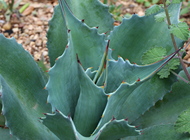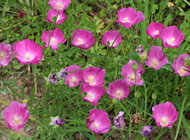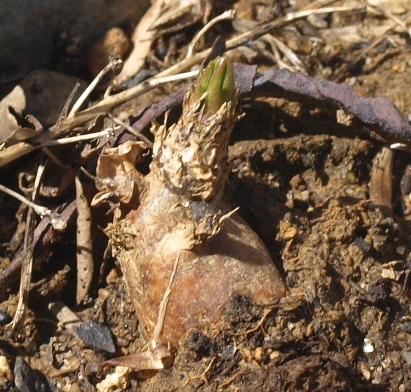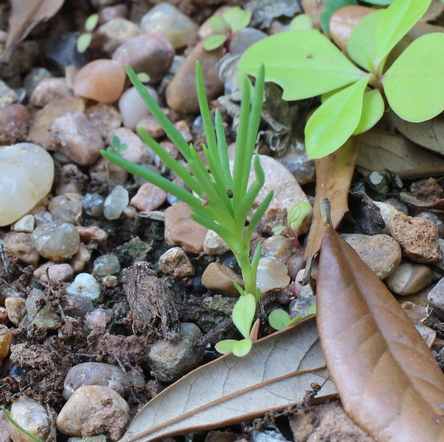 |
Talinum calycinum |
 |
| Synonym(s) |
Phemeranthus calycinus |
| Common name |
large fameflower |
| Family |
portulacaceae |
| Life cycle |
perennial (Z5-9)  |
| Flowers |
pink (late spring-summer) |
| Size |
8" |
| Light |
sun |
| Cultural notes |
well-drained soil, drought-tolerant |
From seed  |
Flowers first year from seed sown indoors early.
detailed seed-starting info below
|
| Seed ripens | extended period, starting late July |
Compact-growing succulent, native to US prairies. The slightly twisty mass of slender rubbery leaves looks cool enough – magenta flowers held above on wiry stems are a bonus. In several early attempts, I managed to raise flowering first-year plants, but none of them returned for a second year. So I was pleased when one year (after a cold winter, even), several plants returned. They were a bit late, not showing growth until late April, so I may have inadvertently discarded their lifeless root structures in previous years.
After growing this several times in Pennsylvania, I decided to give it a try in Houston as well. I managed to keep one seedling alive into its second year, which proceeded to bloom nicely that summer – but the plant died after flowering, and I didn't get around to collecting seed. Luckily, two seedlings emerged the following spring; I hope to keep at least a small population going...
A note about collecting seed: the ripening seed capsules eventually turn tan, at which point they very readily release their trove of small black seeds. The problem is that many drop their seeds before that point: even with loads of flowers fading, you don't see many tan seed capsules. I found that you can harvest the capsules when they are starting to show a hint of red around the edges: the seed inside is already ripe at that stage.
|
|
| 
| | Growth returns, late April |
|

| | One of two seedlings emerging early May; their mother plant died after flowering the previous year, so I'm happy to see them (but had been hoping for greater numbers) |
|
In our garden, this plant grows in the following area: rock garden zone About my plant portraits
Visitors to this page have left the following comments| Gary Maly | Aug 18, 2013 | We live just north of Cincinnati OH in what was recently reclassified as zone 6B. 5 years ago On purchasing the original 2 pots of Talinum Calycinum, we were told to treat it as an annual. That fall however, we took the potted plants to the basement along with other tropical s we overwinter most under fluorescent lights. The Talinum died back and we shoved the empty pots into a dark corner and thought no more about them until in early spring I noticed a fine carpet of green seedlings and the greening of the barren tuber like parent plants. 3 years ago, we planted a 24 inch cocoa fiber lined wire deck rail basket with a dozen or so seedlings that bloomed until frost, dancing in the breeze like miniature fuchsia butterflies. We brought the parent pot into the basement as usual but left the cocoa pot hanging on the rail for the winter. In the late spring as I prepared to empty and replant the rail pot I noticed the familiar green Matt of seedlings and also the now 3 yr. old parent plants. Not only in the rail planter, but the seeds had fallen inti the gravel below the deck and had germinated en mass. For the past 2 years we have not bothered taking the pot in for the winter. We leave it outside on the south facing deck under the eaves because I believe rating and snow are more the enemy than winter. We also have a large grouping permanently planted in an elevated rock garden which contains a lot of gravel which have survived and thrived for the past 2 winters.
Thanks for sharing all your experience, Gary! |
- Seed from HPS/MAG '08/'09 exchange. Baggy 35F (8w) - 70F (61%G, 6-17d)
- Seed from HPS/MAG '12/'13 exchange. Baggy 35F (8w) - 70F (5w, no G)
- Same seed as above, cold-stored. Baggy 35F (10w) - 70F with light (~20%G, 10-20d)
- Seed from '14 garden, cold-stored. Baggy 35F (10w) - 70F with light (35%G, 11-30d)
I welcome comments about my web pages; feel free to use the form below to
leave feedback about this particular page. For the benefit of other visitors
to these pages, I will list any relevant comments you leave, and if
appropriate, I will update my page to correct mis-information. Faced with an
ever-increasing onslaught of spam, I'm forced to discard any comments including
html markups. Please submit your comment as plain text. If you have a
comment about the website as a whole, please leave it in my
guestbook. If you
have a question that needs a personal response, please
e-mail me.
|